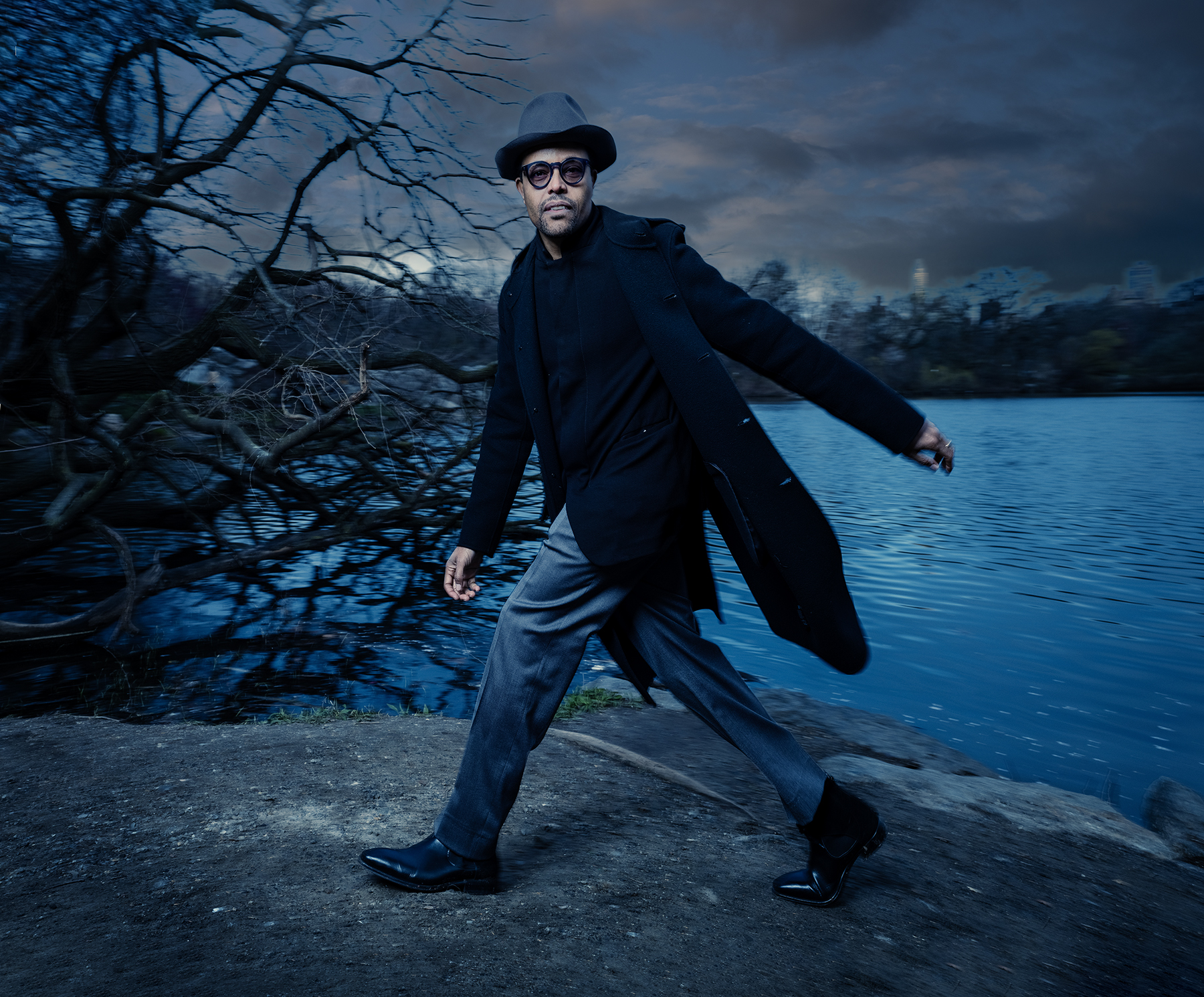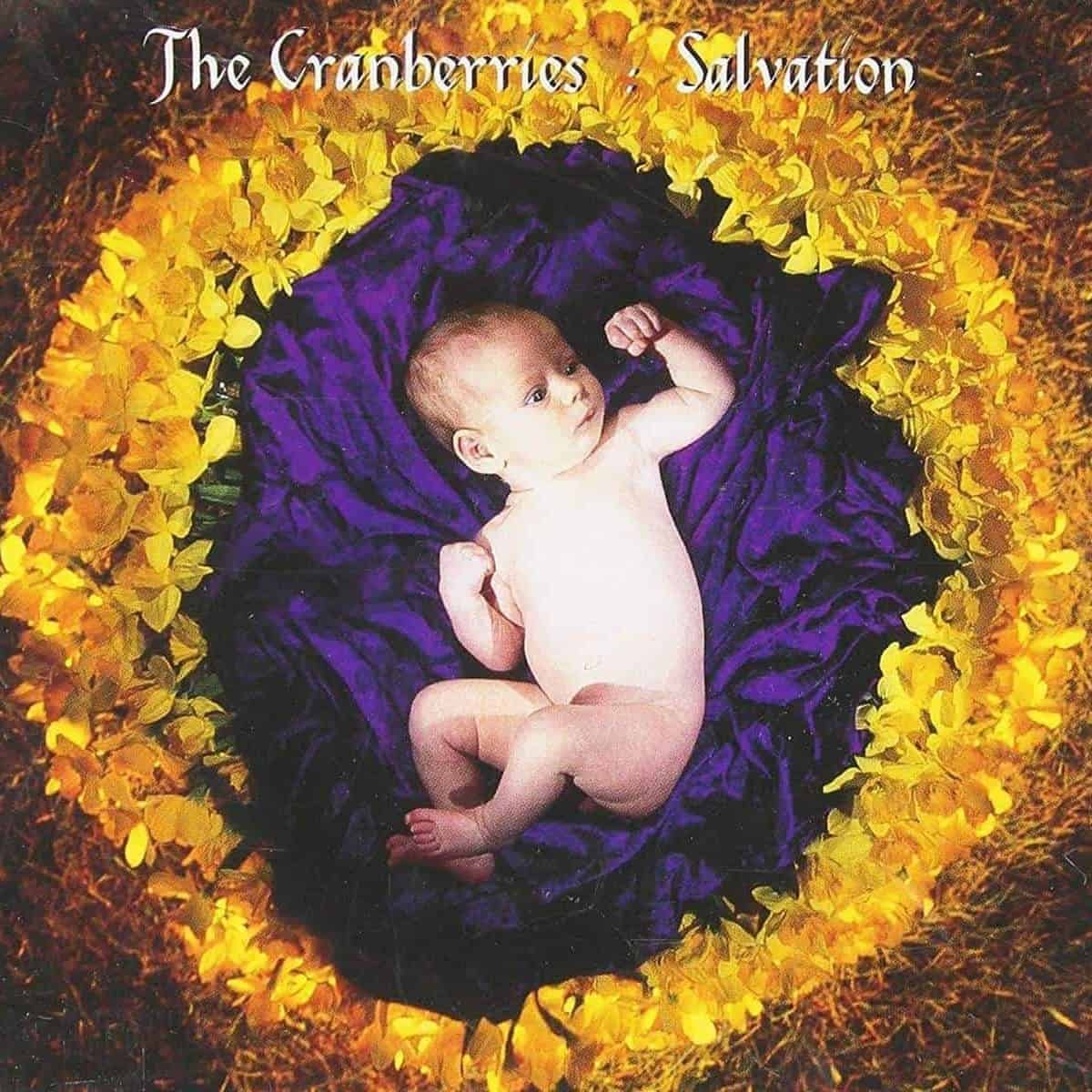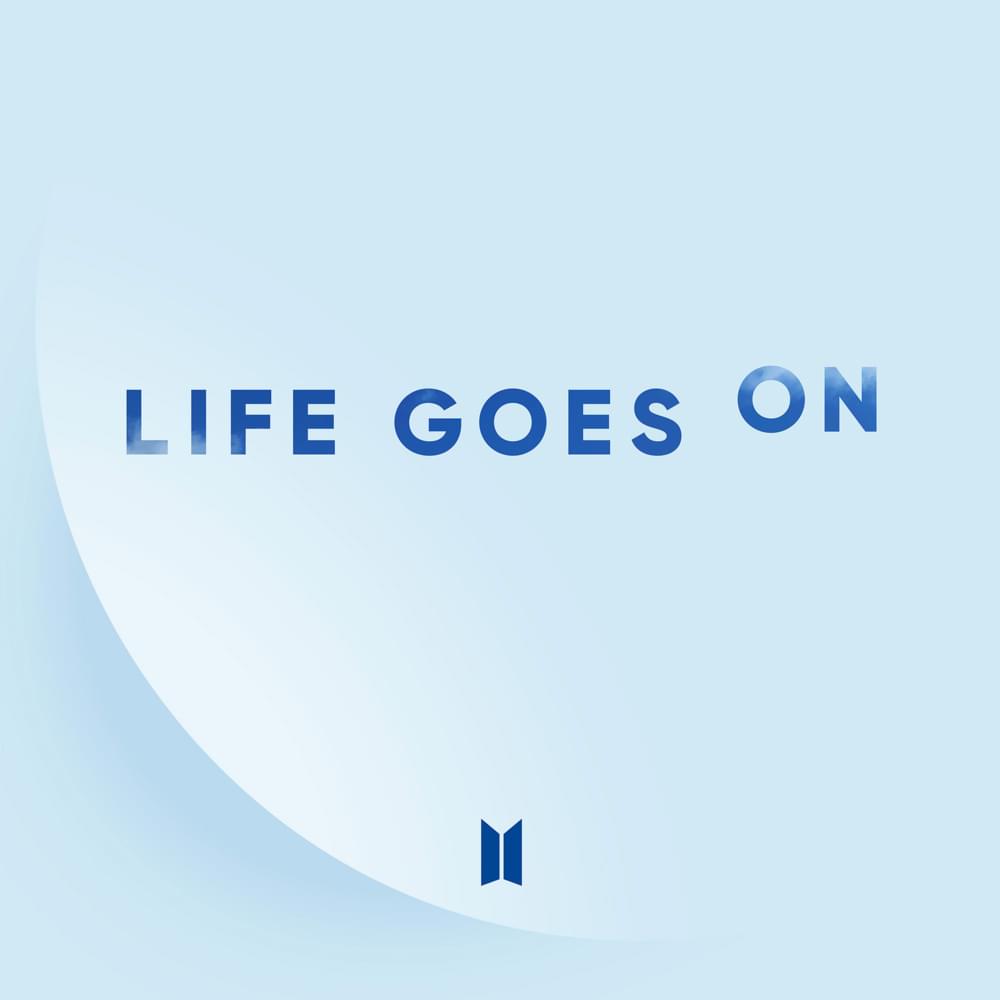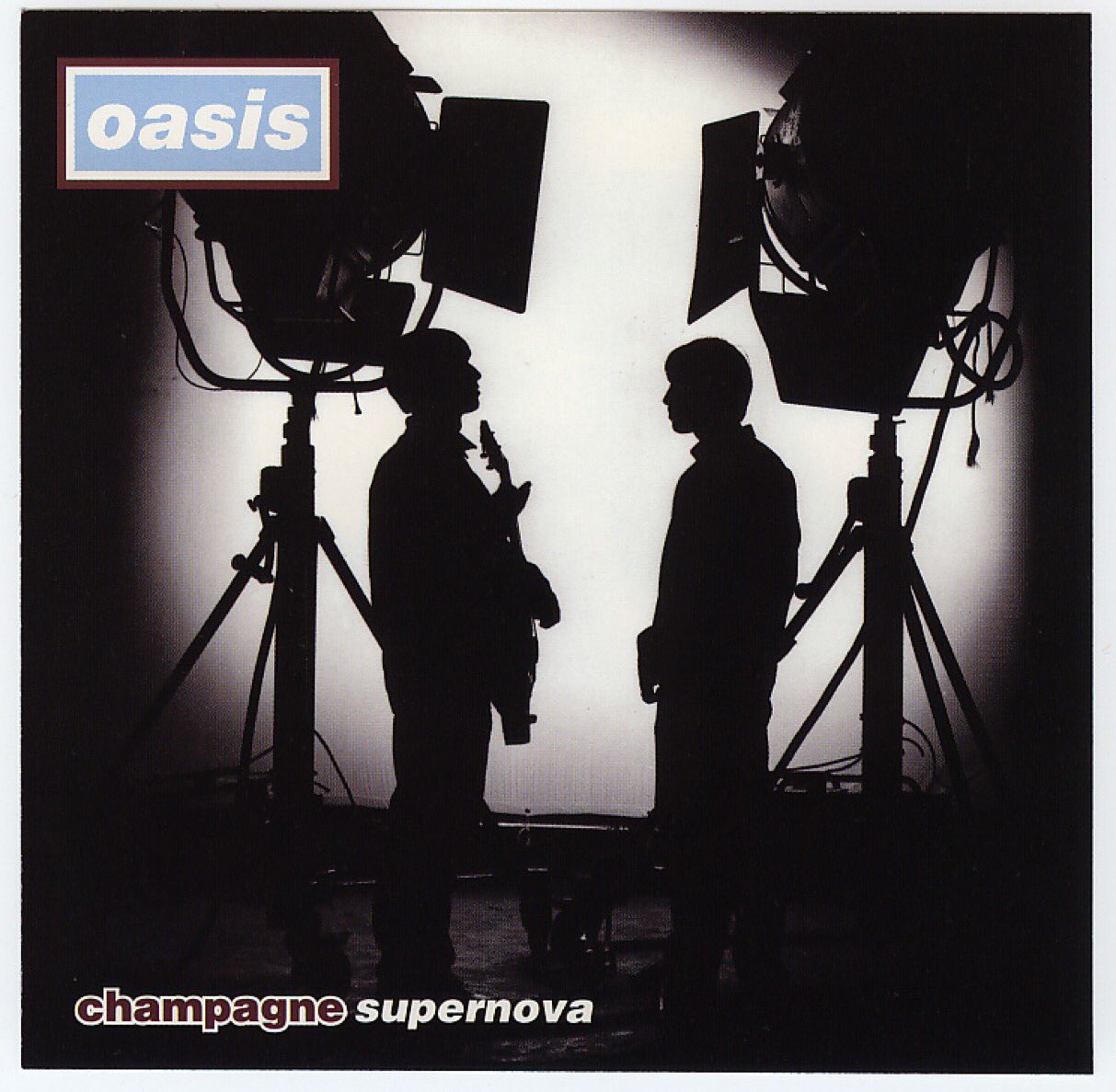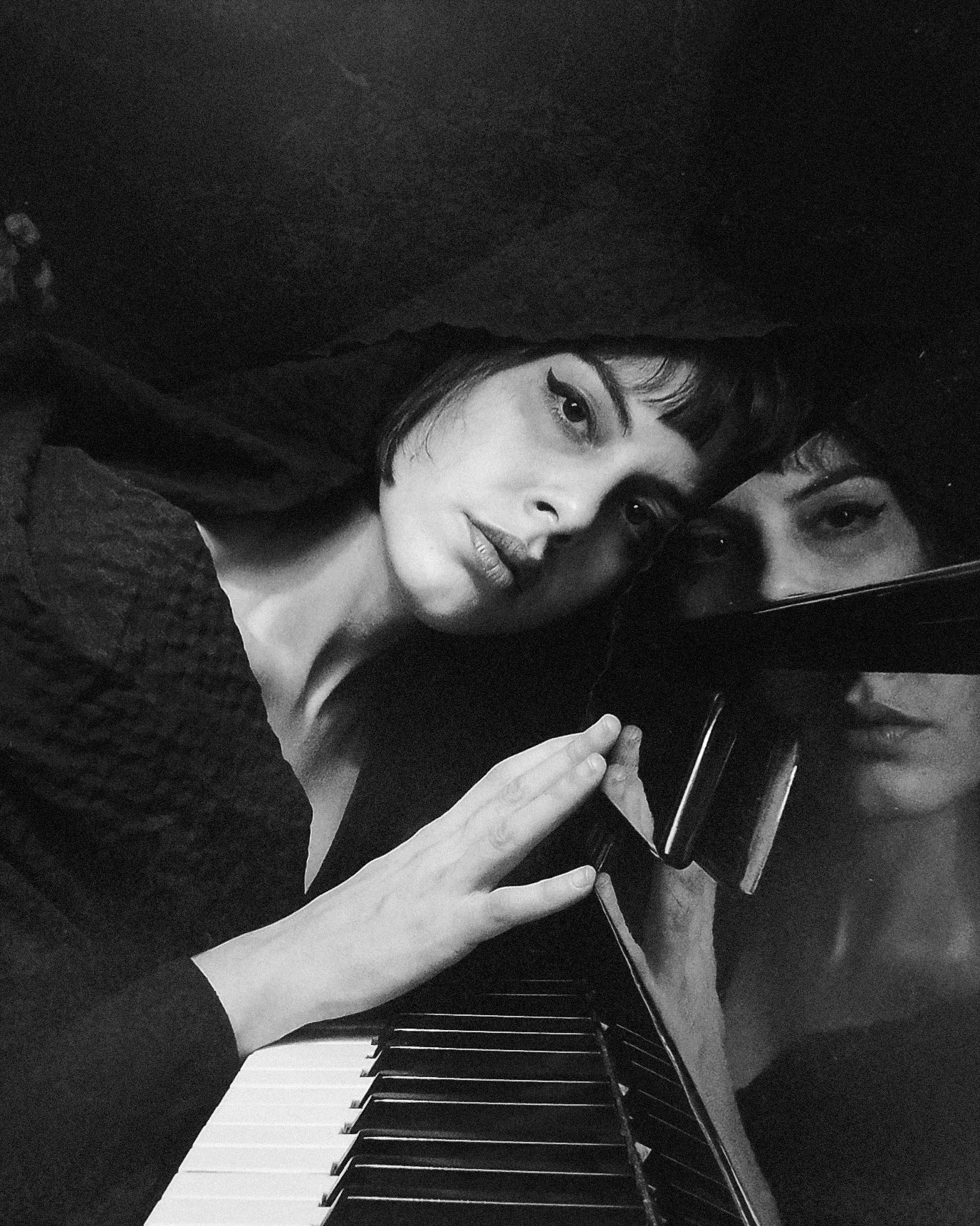Nasheet Waits is second-generation jazz royalty. His father was percussionist Freddie Waits, who was a studio drummer for Motown Records before making his name in the jazz world. The elder Waits played on records by a stunning array of artists including McCoy Tyner, Freddie Hubbard, Andrew Hill, and Bill Dixon, among others, and was a founding member of Max Roach's pioneering all-percussion ensemble M'Boom.
The Waits family lived in Westbeth Artists Housing, an artists' community on the edge of Greenwich Village that opened in 1970 and also includes studio space and various arts institutions including the Martha Graham Center of Contemporary Dance, the avant-garde performance space the Kitchen, the Westbeth Gallery, and more. Nasheet and his brother Shareef were raised around artists of all types, but he was particularly drawn into the community of jazz drummers.
"I never even knew that these people, including my father and all the people that he was working with were like, you know, master musicians, geniuses, and innovators," he told me recently, over Zoom from Switzerland. "I mean, they were my father's friends, almost like family… Max Roach was like a godfather to me. I mean, I didn't really understand the gravity of having the ability to reach out to him and him answer… and bring me into his circle until I was much older."
Waits' mother Hakima died when he was 13; he was sent to boarding school and from there attended Morehouse College, studying history and psychology. But he had to return to New York when his father died suddenly in 1989; he and Shareef continued to live at Westbeth, with support from Roach, his godfather Dr. Fred King, and drummer Michael Carvin, who was also his teacher at Long Island University.
"Anytime, I could call those incredible men and they were there for me and my brother in a lot of ways. Not just musically. So those three people meant a lot to me, and I had a lot of other people that were very kind and very generous and imparted a lot of information to me: Jack DeJohnette and Billy Hart were really close friends of my father's as well. And they were very kind and continue to be very, very helpful and stay in touch, you know, like uncles in the music and I don't take that for granted."
Waits has been performing professionally since the 1990s. He got an early break working with saxophonist Antonio Hart, but from the beginning, he's been an adventurous player up for anything; he can be heard on two tracks from avant-garde Japanese vocalist UA's 1998 album Ametora, for example. Toward the turn of the century, he made a few crucial connections with pianist Jason Moran, vibraphonist Stefon Harris, and bassist Tarus Mateen.
"I first met Jason when he was a student at Manhattan School of Music," he recalled. "He was rooming with Stefon Harris, and Tarus Mateen and myself had started — we had a connection, and we reconnected through Marc Cary. And Stefon hired Tarus, I believe…So Jason, Tarus and myself played with Stefon for a few gigs and then there was a band called New Directions that was, like, a contrivance of Blue Note records, almost like one of those young lion-ish type things where Greg [Osby] was like the older mentor of the group."
The New Directions band, which also included saxophonist Mark Shim, made an album and spent several months touring in the US, and gradually the bond between Moran, Mateen, and Waits grew tight enough that the pianist decided to make it official, dubbing the group the Bandwagon. They first appeared on his 2000 album Facing Left and have been together ever since. Their collective musical language is not that of a typical piano trio, which makes it difficult for other players to find a way in. Waits says, "As a rhythm section, nobody was really comfortable with us. So we had to kind of find our own way and also work some things out amongst ourselves."
Still, in 2001, they made an amazing and still revelatory record, Black Stars, with one very special guest: saxophonist and flutist Sam Rivers, who had worked with Waits' father (and whose granddaughters had been in junior high school band with him). "Sam was, you know, he wasn't that familiar with Tarus and myself," he recalls. "I think he knew Jason a little bit better, musically speaking, but he was kind of trying to wait and see if we were going to be able to bring and sustain the energy that he always brings or sustains…so it was really like a confirmation from a master. Like, you're on the right path; keep doing what you're doing. You know, I'm supporting you by being here, because if he didn't think this shit was happening, he wouldn't have cosigned it. He would be like, y'all aren't ready. But the fact that we had the courage to jump in there and some intuition and some wherewithal to even be in the same room with him was, you know, it gave you some confidence."
I saw that band play at Iridium, and more than 20 years later, I'm still struck by the way they were able to challenge each other, rising to and staying on the same level as a ferocious improviser and thinker like Rivers, and Waits' approach to drumming is key to that. As Moran said in a Jazziz profile of Waits in 2017, "The way Nasheet's sensibility moves on the kit is unsettling. He can make the ground that might be lush soil turn into ice very fast. You think you have your footing, then all of a sudden it becomes very slippery, and that next step you take, all of a sudden you're sliding… Any bandleader who calls Nasheet is not looking for anything light. They want to feel the fire underneath them."
One player who definitely wanted to feel the fire underneath himself was legendary German saxophonist Peter Brötzmann, and he and Waits worked together off and on for several years, sometimes joined by bassist Eric Revis. "I was working at the Berlin Jazz Festival…with Andrew Hill and Jason, played a concert with Andrew earlier in the evening, and then we played with Jason in a club, I think, later that night," Waits recalls. "And John Corbett, who was the curator of the Berlin Jazz Festival that year… was like, ‘Oh, man, I was just listening to you play with Jason. I think it would be great if you and Brötzmann did some duos, what do you think about that?’ And I was like, ‘Yeah, that sounds great.’ Now, mind you, I had never really listened to Peter. I didn't know his music at that point, but I was like, yeah, that sounds cool."
A few months later, Corbett booked the Brötzmann/Waits duo in Chicago and the drummer flew out. "I get to the club, and you know, he gets there and he's, like, really very quiet. He's very pleasant, you know, but like, real quiet. And I was like, ‘Well, what are we going to play?’ He said, ‘Well, we just do our best, you know?’ And I'm like, ‘What does that mean?’“
What it meant, as was typical for Brötzmann, was that he was going to start from zero and just not stop. "The energy and the vibration that was coming… I'm trying to match it, the intensity. For about seven minutes I was like, dripping in sweat. I felt like I was gonna pass out [and] I looked over at him and he looked like he had just started. He was gonna blow the house down. And we had two sets, you know? That was a quick lesson in energy distribution, you know, and pacing yourself. I paralleled working with him to, like, running the 400. Like, you can't do an all-out sprint, but it's like 9/10 of a sprint, but you still have to be mindful of your energy, because if you go off, you're not going to be able to finish the race."
In addition to the Bandwagon, Waits is one-third of another fascinating trio: Tarbaby, a collective he formed with Revis and pianist Orrin Evans in the late 2000s. They released their eponymous debut on Evans' Imani label in 2009. It featured guest appearances by tenor saxophonists JD Allen and Stacy Dillard, and subsequent albums on Posi-Tone, RogueArt, and Clean Feed have brought alto saxophonist Oliver Lake; trumpeters Ambrose Akinmusire, Josh Lawrence, and Nicholas Payton; and guitarist Marc Ducret to the party. The group performs a wide range of music, from originals by each member to tunes by Sam Rivers, Andrew Hill, Fats Waller, and Oliver Lake. They've also recorded versions of Prince's "Sometimes It Snows In April" and the Bad Brains' "Sailin' On."
Waits describes Tarbaby as "like a home for us outside of our other homes…we had so much fun just hanging out with each other and having a good time and talking about what we gravitated toward that it became kind of like a laboratory for us to bring music in to develop in different ways. It became like a way for us to be able to workshop stuff that we were thinking about, tunes that we had written, ideas that we had, and it was a great place for us to be able to kind of come in, congregate and discuss and execute these different ideas."
After nearly a decade between releases, Tarbaby released its fifth album, Dance Of The Evil Toys, in 2022, and now they're back with You Think This America, one of two records Waits is putting out through photographer Jimmy Katz's Giant Step Arts organization. It's their first to not feature any guests, just live recordings of the trio at the Ida K. Lang Recital Hall on the campus of New York's Hunter College. Waits describes that shift in approach as "something that we kind of wanted to do consciously. Like, most of the things that we had done were always augmented with other people, where this is an opportunity to just showcase the trio and be like, okay, this is what's behind all the other stuff, that's supporting all the other stuff. In the same spirit, though."
Waits' other new album, New York Love Letter (Bitter Sweet), is only his third under his own name. It features saxophonist Mark Turner, vibraphonist Steve Nelson, and bassist Rashaan Carter, and it grew out of a series of live performances at the site of Seneca Village, a Black settlement that was torn down in 1857 under eminent domain, in order to make room for Central Park. The band represents three different artistic generations coming together: Waits is 53, Turner 58, but Carter is just 38, and Nelson is 69. But it was the vibraphonist who was key to the whole project, according to Waits. "The times when I have heard him, what he offered was always really striking and always seemed like the baddest stuff that was created during the set. I'd be like, Steve Nelson tore the house down!"
The album includes nods to two of Waits' key creative partners; the group performs Jason Moran's "Snake Stance" and Andrew Hill's "Snake Hip Waltz." Those are followed by two Waits compositions, "Moon Child" and "The Hard Way AW," and the record ends with versions of two lesser-known John Coltrane pieces: "Central Park West" and "Liberia," both from the 1963 album Coltrane's Sound.
"When we were doing those concerts out in the park, we used to start with 'Central Park West,' because Seneca Village is on Central Park West," Waits explains. "So it kind of seemed like a natural. And it's such a beautiful song, very direct, and playing outdoors it had a way of kind of, especially during that time of the pandemic…people were always saying, this is the first live music I've heard in nine months, because nothing was happening indoors. So it was an opportunity to welcome everybody into the concert. And 'Liberia' was just another bad tune that you don't really — I haven't heard many people play that song, actually. Generally, that's probably one of the rules that we follow [in Tarbaby] was like, we don't really use overused material. You probably won't hear us play 'On Green Dolphin Street' or something. Even though I like 'On Green Dolphin Street' and 'Stablemates.' But you probably won't hear us address that. We kind of have a mission to highlight and expose, you know, the Sam Rivers and Andrew Hills and Elmo Hopes of the world, because not everybody's heard those people and they've got an incredible catalog."
Nasheet Waits doesn't seem to like the term "jazz"; several times during our conversation, he described it as inadequate to what his father, Max Roach, and others did. But he's become one of the most interesting and exciting drummers of the last 20 years or more, and it's great to see him stepping into the spotlight as a leader.
TAKE 10
Beings - “Happy To Be"
Beings is a new group featuring saxophonist Zoh Amba — who also plays piano and guitar, and sings — with electric guitarist Steve Gunn, bassist/synth player Shahzad Ismaily, and drummer Jim White. Amba has made a name for herself pretty quickly on the New York avant-garde jazz scene, recording with a lot of heavyweights, from John Zorn to William Parker to Tyshawn Sorey. Her style is raw but disciplined, and she has her own voice. All you can hear when you listen to some young free jazz players is their record collection; you wind up thinking, yes, you've heard Ayler; yes, you've heard Brötzmann; but what are you bringing to the table? Amba has ideas of her own, and Beings' clanging, post-Sonic Youth dream-rock is an excellent context for her. Gunn's grinding guitar, Ismaily's dubby bass, and White's rattling punk-jazz drums function beautifully on their own; the sax solos are a bonus. (From There Is A Garden, out now via No Quarter.)
Jihye Lee Orchestra - "Surrender (Feat. Ambrose Akinmusire)"
The second album by composer Jihye Lee is a musical exploration of hybrid identity and a bridge between the music of her native South Korea and American jazz. Each of its nine pieces is built around a traditional Korean rhythm, and is also inspired by some aspect of her culture and family history, specifically the life of her maternal grandmother, who was "Born in 1935" (the title of the third track here). Like her debut, 2021's Daring Mind, it was co-produced by Darcy James Argue, leader of his own large ensemble, the Secret Society. If you think big band music's not for you, listen up. Lee's work has a thrilling vitality — every piece here moves deftly in unexpected directions, and the 18 musicians flow smoothly with and around each other. Trumpeter Ambrose Akinmusire guests on the first track, delivering a solo with all the meditative tenderness of his own albums. (From Infinite Connections, out now via Motema Music.)
William Parker - "Five Angels By The Stream"
William Parker received a lifetime achievement award at the Vision Festival last week, and I can't think of anyone who deserves one more. Now 72, he's been a load-bearing pillar of New York's (and the world's) avant-garde jazz community for 50 years or more. He's prominently featured in my upcoming book In The Brewing Luminous: The Life & Music Of Cecil Taylor, and some of the stories he shared were amazing. Heart Trio is one of two brand-new Parker albums, a collaboration with long-term creative partners Cooper-Moore (playing ashimba and hoe-handle harp) and Hamid Drake (drums and frame drum). Parker himself plays doson ngoni, shakuhachi, bass dudek, and flutes. "Five Angels By The Stream" is one of the longer tracks on the record, an eight-minute meditation featuring plucked strings and gentle vocal chants from Parker and Cooper-Moore, and soft but insistent drumming from Drake. Long may William Parker run. (From Heart Trio, out now via AUM Fidelity.)
Kim Cass - "Levs"
Bassist and composer Kim Cass has been working a lot with saxophonist Noah Preminger and pianist Matt Mitchell in various contexts over the last few years, so if you recognize his name, that's probably why. Mitchell is here, on Cass' full-length debut, along with drummer Tyshawn Sorey, Laura Cocks on various flutes, and Adam Dotson on euphonium, a medium-sized horn that looks like a small tuba. The flute and euphonium are used rather sparingly, more to fill out the arrangements than to take traditional solos. Mitchell is the dominant voice, spinning out long, busy lines that remind me of the composer Conlon Nancarrow's pieces for player piano, which were specifically designed to create effects human beings couldn't, due to not having enough hands. Sorey's drums are thick and blocky, emphatic and resolutely un-swinging, and Cass's bass is an anchor point but offers little guidance. This is heavy and thrilling stuff. (From Levs, out now via Pi Recordings.)
John Escreet - "Erato"
In 2022, pianist John Escreet, who'd recently moved to Los Angeles from New York, formed a trio with two other musicians based in his new hometown, bassist Eric Revis and drummer Damion Reid. They made a great album together, Seismic Shift; I interviewed him for DownBeat and found him really excited about the potential of the new unit. Two years later, they're back, this time accompanied by tenor saxophonist Mark Turner. "Erato" is one of only two pieces on the record not composed by Escreet (well, "Meltdown" is a collective improvisation); it's by Andrew Hill, from a 1965 session that wasn't released until a decade later. It's a clanging, emphatic piece, rooted in the blues but with plenty of room for melodic adventurism, something both Escreet and Turner take advantage of, as Revis throbs like a whale's heartbeat and Reid drums like he's stomping his foot on a wooden crate. (From The Epicenter Of Your Dreams, out now via Blue Room Music.)
Malcolm Jiyane Tree-O - "South African Jam"
Trombonist Malcolm Jiyane's Umdali was one of my favorite South African jazz records of 2021; its five tracks were each dedicated to important figures in the music's history or in his own life. That goal of honoring those who came before continues on True Story, which features many of the same players (pianist Nkosinathi Mathunjwa, bassist Ayanda Zalekile, drummer Lungile Kunene, percussionist Gontse Makhene) but fewer horns: last time, Jiyane was joined by two trumpeters and a saxophonist, but this time he's out there alone. The emphasis is on vocals, often wordless, which draw you into the music and emphasize the voicelike quality of the trombone. "South African Jam" lives up to its title, starting off with almost gospel-ish piano and soft chants behind a sweet but passionate trombone melody, eventually building up into a strong percussion-heavy groove with multiple voices singing as Mathunjwa takes a lyrical, spirit-raising solo. (From True Story, out now via New Soil/Mushroom Hour Half Hour.)
Julius Rodriguez - "Mission Statement"
Pianist Julius Rodriguez impressed me a lot with his first album, 2022's Let Sound Tell All. His piano skills were undeniable, and/but he refused to play the jazz game of recording spare arrangements with a steady band. Virtually every track had different personnel and the instrumentation changed up just as much. This follow-up is created in the same manner; some pieces are traditional piano trio stuff, swinging hard but with an emphatic groove and subtle synths adding a little something extra, while others feature high-profile guests like trumpeter Keyon Harrold and vocalist Georgia Anne Muldrow, and still others have lush pop/R&B production and driving electronic beats. "Mission Statement" opens the album with a repetitive keyboard hook and a squiggly synth melody laid over trap-like programmed drums. It's rapturous and sly, and when the beat really kicks in at the 70-second mark, it'll make you want to do elaborate footwork dances. (From Evergreen, out now via Verve.)
Nduduzo Makhathini - "Libations: Omnyama"
South African pianist/composer Nduduzo Makhathini's music often features horns, vocalists, extra percussion, and more. This album, though, is his first trio release since 2015's Matunda Ya Kwanza. Its title, uNomkhubulwane, refers to a Zulu goddess who commands the rain and governs nature, light and fertility, keeping all things in balance. Recorded with bassist Zwelakhe-Duma Bell le Pere and drummer Francisco Mela at the Samurai Hotel studio in Queens, it consists of three multi-part suites: "Libations" (three parts), "Water Spirits" (four parts), and "Inner Attainment" (four parts). "Libations: Omnyama" opens the album, and as is often the case with Makhathini's music, it's intended to draw the listener into a meditative, ritualistic mindset. His gentle voice and delicate touch at the piano lull you for a solid minute and a half before the bassist and drummer make their appearance; le Pere's bass sounds almost like a guitar, and Mela's rhythms have the feel of hand percussion. (From uNomkhubulwane, out now via Blue Note.)
Thembi Dunjana - "Indlela Ikhona"
Pianist Thembi Dunjana's album title is a salute to her hometown and home country; "iKapa" is the name for Cape Town and "Mzantsi" is the name for South Africa in her first language, isiXhosa. This is her second full-length, after the 2021 double disc Intyatyambo. Her earlier music blended jazz, soul and R&B; she switched between acoustic and electric piano, sang on several tracks, and employed various production styles, some of-the-moment and others classic verging on retro. This album seems at first to be a more straightahead South African jazz session, even though some of the players (bassist Tim Norton, drummers Jerome Jennings and Darrian Douglas) are Americans. Dunjana plays piano and sings (overdubbing her own background vocals, apparently, as no one else is credited), with two horns up front: alto saxophonist Zoe Obadia and trombonist Siya Charles. But listen for the unexpected synth line as "Indlela Ikhona" winds down... (From God Bless iKapa. God Bless Mzantsi., out now via AfricArise/Ropeadope.)
Milford Graves, William Parker, & Charles Gayle - "WEBO C3"
William Parker didn't work with drummer Milford Graves that often, but every time he did, it seems, they burned the whole building down. During Graves' lifetime (he died in February 2021, a few months shy of his 80th birthday), only one of those recordings was released: Beyond Quantum, a 2008 trio session with saxophonist Anthony Braxton for John Zorn's Tzadik label. But since his death, two more have emerged. The first was Historic Music Past Tense Future, a live set from 2002 recorded at CB's 313 Gallery, the small arts annex of the legendary punk club CBGB. The saxophonist that time was Peter Brötzmann, who died in June 2023. The latest is a triple LP recorded in June 1991 at a short-lived Lower East Side venue known as Webo, featuring Charles Gayle, who also died last year, three months after Brötzmann. This two-hour slab features music from both nights of performances and comes wrapped in a painting by artist Jeff Schlanger that was created on the spot as the music was happening. As one might expect, it is a fearsome document. This was a period during which free jazz of this type was reaching some genuine peaks — a few months later, Gayle and Parker would record Touchin' On Trane in Berlin with Rashied Ali on drums — but was still very much an underground phenomenon. In some ways, I would compare it to the NYHC of bands like Sick Of It All, Breakdown, Gorilla Biscuits et al., or the boom-bap hip-hop of M.O.P., Mobb Deep, early Wu-Tang Clan, etc., etc. This was music for diehards, that made no concessions to outsiders, but if you were initiated into the scene/world, it could become the only thing you wanted to hear. I didn't find this music until a few years later, but some of the shows I saw in the late '90s and early '00s — David S. Ware in duo with Rashied Ali; Peter Brötzmann with fellow saxophonist Thomas Borgmann, Parker on bass, and Charles Downs (fka Rashid Bakr) on drums; the Ware quartet (with Matthew Shipp on piano, Parker on bass, and either Susie Ibarra or Guillermo Brown on drums); and many more — will stay with me as long as I live. What's great about this extremely well-recorded document (the musicians arranged for it to be taped, but the tapes sat in Graves' archives until his passing) is that it allows you to hear the intricacy and depth of the interaction between these three men. Graves is an extraordinarily powerful drummer, but he's more interested in his snare and toms than his kick or hi-hat; he started out as a timbalero, and you can always hear that in his playing. Gayle is about as free as it's possible to be, but he's not just making noise; the track streaming above has as much melodic content as any jazz standard. And Parker isn't just the glue holding the whole thing together, although he's definitely that at times; he's also a melodic voice, picking up his bow to almost harmonize with Gayle as though they're two huskies singing in the Arctic night. Free jazz, played at this level of commitment and intensity, is absolutely not for everyone. But if you can tune into its frequency, there's nothing else like it, and this set, available digitally or as a deluxe vinyl box, sucks the breath right out of me every time I put it on. (From WEBO, out now via Black Editions Archive.)
OUTWARD BOUND
The ungodly beast emerges from his wretched lair pic.twitter.com/zYSa0kv6ys
— Joe (@Darth__Biden) June 14, 2024
